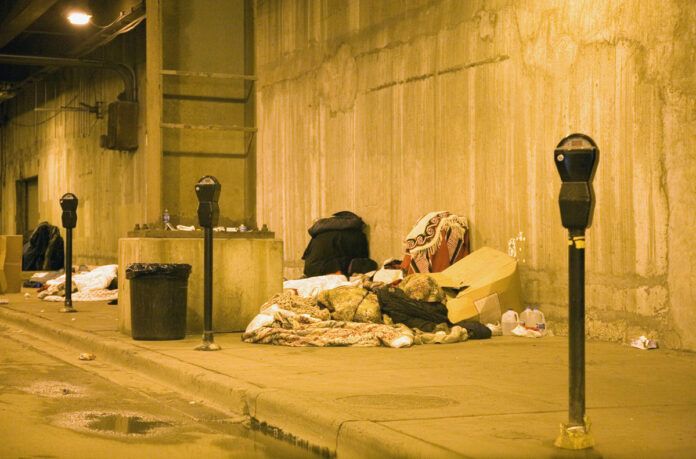Last Friday, students from Mater Dei Catholic High School and Juan Diego Academy gathered in the Kassebaum Theater to participate in the campus’s fifth annual “Night For the Homeless.” Participants began by learning more about this year’s theme of refugees from a panel of speakers and ending the night by packing hygiene bags for local charities. Leaving the event left one thought on my mind: now more than ever, especially with growing uncertainty in Ukraine, should the issue of displaced and homeless people in San Diego be brought to the forefront for youth and city leaders alike.

San Diego has always been an urban epicenter for those without a home. After the postponement in January this year, San Diego began its unsheltered survey on Feb. 24. From Thursday’s first count, almost 2,000 individuals have already been reported, quickly approaching the 7,619 total in 2020. The prospective increase in the homeless population has obvious explanations: the pandemic, rising economic inequality, abuse, and mental illness continually push this statistic to troubling numbers. With growing enforcement on homeless encampments and the recent suspiciously uncharacteristic weather of southern California, our county’s unsheltered continue to face issues hidden in plain sight. However, unlike many other urban epicenters for homelessness, the surveyed unsheltered aren’t the only ones without a place to call home in this county.
The immigration and refugee crisis is nothing new to San Diego county. In our county alone, 10,000 pending immigration cases are still yet to be resolved and a daily average of 755 non-citizens remain in the Otay Mesa Detention Center, awaiting trial or executive decision. Across the border, thousands of asylum seekers from Syria, Afghanistan, Myanmar, and all across Latin America await entrance at the San Diego-Tijuana border. Together with our growing population of the unsheltered, the total amount of unsheltered persons is well-beyond many people’s initial perceptions. But why do we continually see such a massive population of refugees from these countries?
Vino Pajanor, CEO of Catholic Charities and panelist at Mater Dei’s “Night For the Homeless,” cited some of the greatest issues that have caused such a massive surge in asylum seekers. “Political prosecution… gangs harassing civilians, economic uncertainty, the trifecta effect along with COVID-19 is forcing people to migrate,” he explained. Pajanor has worked with thousands of resettlement and undocumented cases since becoming CEO of Catholic Charities. Even after asylum seekers are granted asylum, he described the treatment and perception of immigrants as a contributor to their continued struggles in this country,
“Forget the ‘undocumented,’ think the person, the individual.” Oftentimes, asylees will be presented with great hardship in the resettlement process as they are left with little government support and sense of community, further contributing to the great displacement issue in San Diego.
Carmen Chavez, an attorney at Casa Cornelia Law Center and fellow panelist to Pajanor, offers a legal perspective to San Diego’s refugee crisis. “How many people knew there was a detention center right in the middle of Otay Mesa?” she asked the congregation of students. To her surprise, only a handful of her audience was aware that such tragic, inhumane mistreatment was happening right next to them. She went on to express our need to push for further legal reform, especially amidst the immigration case backlog caused by the pandemic. Stagnant policies, a lack of awareness of immigration law, and a lack of support from governmental structures contribute to the legal suppression of asylum seekers.
It is clear that San Diego has a unique challenge against helping mitigate homelessness that sets it apart from many other highly urban cities in the U.S. – not only does our county have a large population of unsheltered citizens, but also an equally sizable and important population of asylum seekers and undocumented immigrants in detention centers or in the grueling process of resettlement. Especially with the prospective rise in Ukrainian asylum seekers that our county is likely to see in the near future, San Diego officials and citizens must understand these often forgotten nuances of homelessness to help solve an issue that will only grow more extensive as time passes.
I encourage everyone in Chula Vista to reach out to local organizations and resources to see how you and your community can help.
Cu is a senior at Mater Dei Catholic High School.












